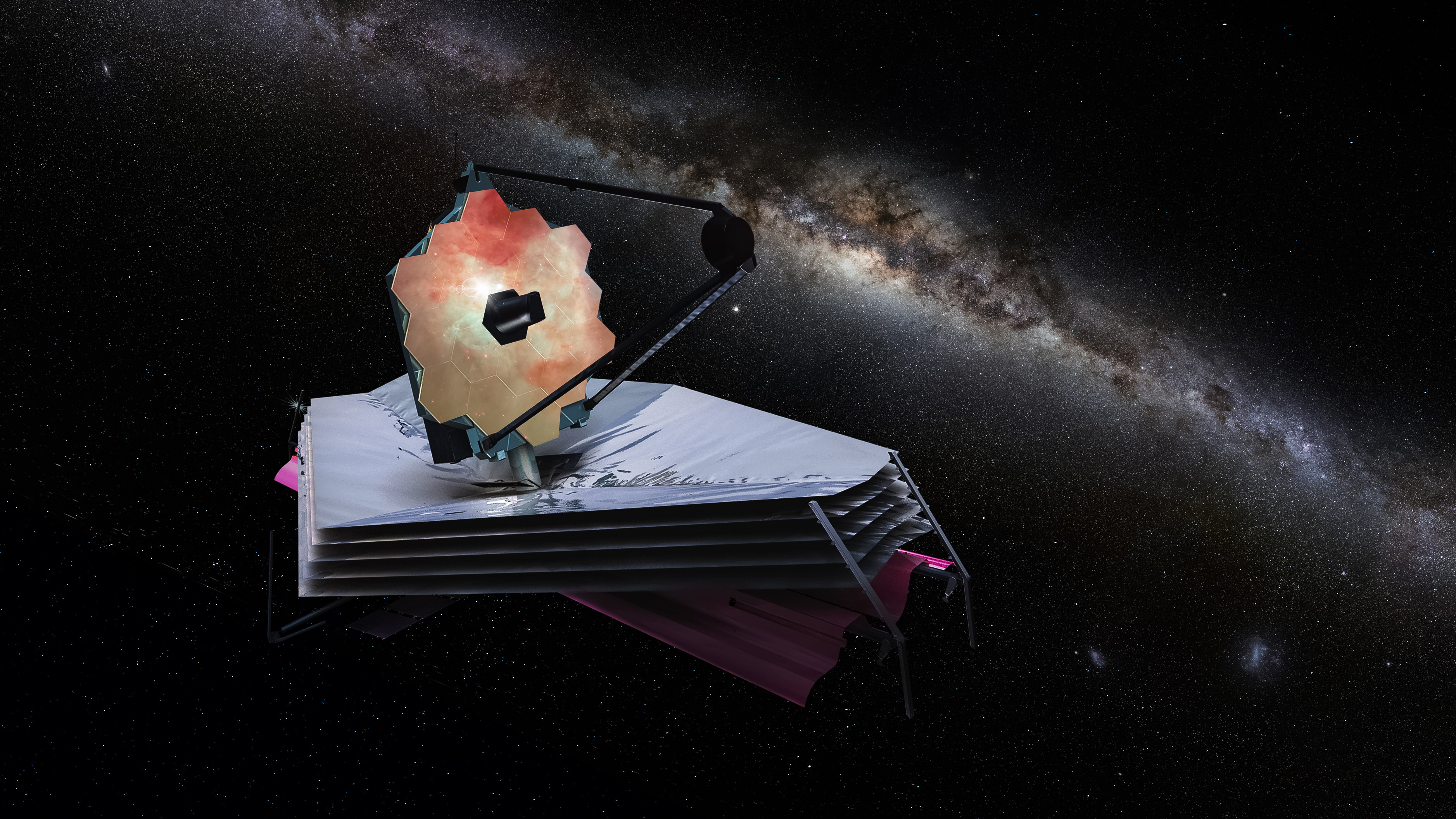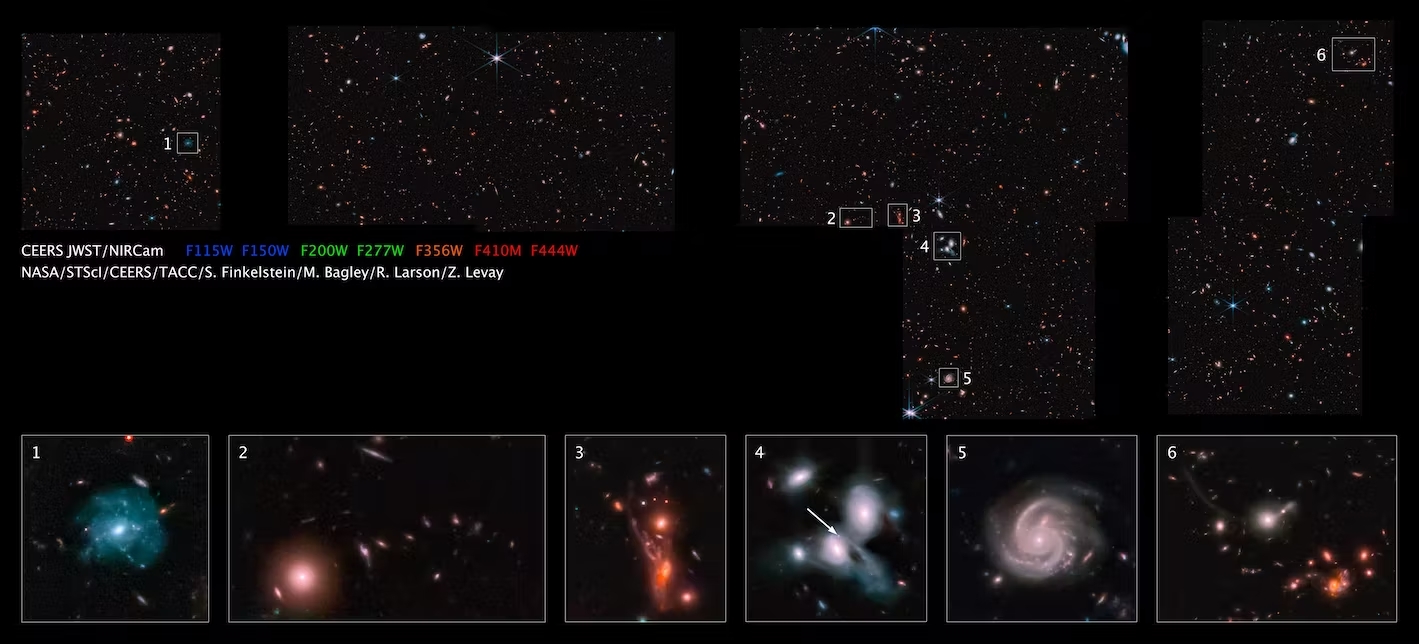Behold James Webb Telescope’s largest and most dazzling image yet
The James Webb space telescope continues to dazzle. After releasing the telescope’s first images in July, NASA and the other agencies behind the new telescope have continued to monitor and observe new galaxies and celestial phenomena. Now, the Cosmic Evolution Early Release Science Study (CEERS) has released James Webb’s largest image to date.
The new image is a mosaic that includes multiple pieces of data put together by people working on CEERS. The team is made up of 105 scientists and 19 investigators stationed across 28 institutions in the world. They captured all of the data using the new telescope. Together they all make up James Webb’s largest image to date.
This is the most detailed image from James Webb yet
The data was gathered using James Webb’s Near Infrared Camera (NIRCam), its Near Infrared Spectrograph (NIRSpec), and its Mid-Infrared Instrument (MIRI). Each part of the data was taken parallel to the others. Researchers then carefully stitched them together. The instruments capture data using wavelengths that aren’t visible to the naked eye. They then translated the data into visible images.
This lets the scientists more closely investigate the emissions and elements from some of our universe’s earliest galaxies and celestial events. As James Webb’s largest image to date, the image focuses mainly on six specific galaxies out of the plethora of those captured in the scope of the entire project.
These galaxies include a bright blue spiral arm galaxy. There’s also an elliptical galaxy nicknamed “Pac-Man” due to its resemblance to the popular video game character. Other galaxies taking the spotlight include one nicknamed the Space Kraken, a set of interacting galaxies believed to be from around 9 billion years ago.

James Webb’s largest image to date also includes what many believe to be the space telescope’s first supernova sighting. Researchers published info about that discovery in AstroNotes last month. Plus, it’s just one of many investigations researchers are pushing based on the images that CEERS has released. Even still, the image includes what we believe to be the earliest galaxy we’ve ever discovered.
While confirming these discoveries may take some time, we know that James Webb is doing great work. It has detected water on an exoplanet and will help us unlock more about the early universe.
The James Webb space telescope continues to dazzle. After releasing the telescope’s first images in July, NASA and the other agencies behind the new telescope have continued to monitor and observe new galaxies and celestial phenomena. Now, the Cosmic Evolution Early Release Science Study (CEERS) has released James Webb’s largest image to date.
The new image is a mosaic that includes multiple pieces of data put together by people working on CEERS. The team is made up of 105 scientists and 19 investigators stationed across 28 institutions in the world. They captured all of the data using the new telescope. Together they all make up James Webb’s largest image to date.
This is the most detailed image from James Webb yet

The data was gathered using James Webb’s Near Infrared Camera (NIRCam), its Near Infrared Spectrograph (NIRSpec), and its Mid-Infrared Instrument (MIRI). Each part of the data was taken parallel to the others. Researchers then carefully stitched them together. The instruments capture data using wavelengths that aren’t visible to the naked eye. They then translated the data into visible images.
This lets the scientists more closely investigate the emissions and elements from some of our universe’s earliest galaxies and celestial events. As James Webb’s largest image to date, the image focuses mainly on six specific galaxies out of the plethora of those captured in the scope of the entire project.
These galaxies include a bright blue spiral arm galaxy. There’s also an elliptical galaxy nicknamed “Pac-Man” due to its resemblance to the popular video game character. Other galaxies taking the spotlight include one nicknamed the Space Kraken, a set of interacting galaxies believed to be from around 9 billion years ago.

James Webb’s largest image to date also includes what many believe to be the space telescope’s first supernova sighting. Researchers published info about that discovery in AstroNotes last month. Plus, it’s just one of many investigations researchers are pushing based on the images that CEERS has released. Even still, the image includes what we believe to be the earliest galaxy we’ve ever discovered.
While confirming these discoveries may take some time, we know that James Webb is doing great work. It has detected water on an exoplanet and will help us unlock more about the early universe.
